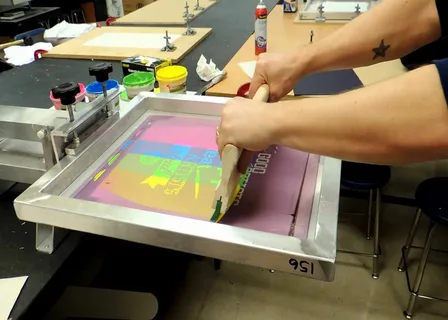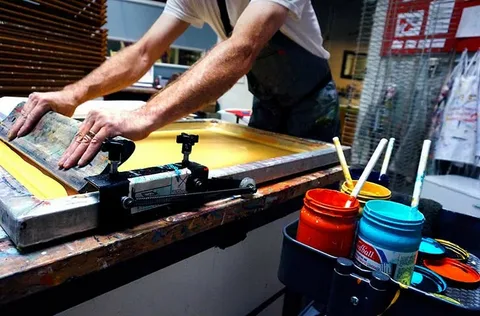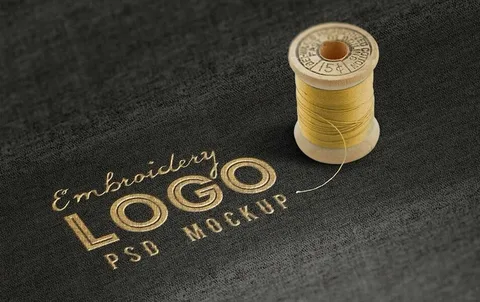
In the world of custom apparel, screen printing is one of the most reliable and creative methods to turn ideas into a verbal art. Whether you print a T-shirt, logo printed caps or screen print jackets, one thing is fixed-the quality of your print depends on how well you convert your image to screen print-red design. If you are planning to promote your brand, launch a clothing line or make a merchant, understanding this process can make a big difference. In this guide, we will break it step-by-step-no complicated stigma, just simple, effective tips for full results.
Step 1: Start with a High-Quality Image
Each great screen print starts with a great image. Avoid low-resolution photos or obscure logo- will only create messy, obscure prints. Instead, use a high-resolution file (300 dpi or more) that maintains crisp details. If your image is in JPG or PNG format, consider converting it into vector art. Vector files (such as .AI, .SVG, or .eps) allow your design to be sharp and clean in any size, which is required for accurate screen printing.
Step 2: Make your design easier Screen printing works best with bold lines and clear shapes.
Many grades, shadows or small details will not be able to translate well during printing. Easy your design by focusing on solid areas of color. If you are printing logo printed caps or screen print jackets, remember – small print areas require more clarity. A simple logo ensures that each stitches and prints seem to be professional and readable from afar.
Step 3: Choose your colors wisely Screen printing uses separate screens for each color.
Therefore, it is important to choose your palette carefully. Limit your design to a few bold colors that complement your fabric. For screen print jackets, dark colors often work best with lighter ink tones, while the logo printed caps will look better with contrasting shades to create a POP POP. Always preview your color scheme before final printing.
Step 4: Prepare a file to print Once your image is converted and the colors are selected, it’s time to separate the layers.
Each color in your design receives its own screen, so your file must be configured accordingly. If this seems technical, don’t worry – companies like Rise Digitizing handle all these steps for you. They will create print-finished files that perfectly adjust the fabric, ensure easy registration and clean edge.
Step 5: Testing before the final run Before the large amount of production, always print the test.
This step helps you hold the issues of configuration, ink smoking or the color match. The test allows you to confirm the composition and vibrancy of ink on your chosen fabric. If you are printing on multiple items-that caps, jackets and T-shirts-each material react differently. A test ensures that your design looks perfect on every surface.
Step 6: Choose the correct printing partner A professional printing partner makes all the differences.
Choose a company that understands screen printing, provides vector conversion and uses high quality materials. Rise Screen printing, embroidered digitizing, and one of the most reliable names of the USA for vector art services. If you are making screen print jackets, promotional T-shirts or logo printed caps, their team guarantees precision, color accuracy and fast turnaround.
With Rise Digitizing, you get more than just printing – you get brand craftsmanship that helps your design stand stand.
Benefits of converting image into screen prints are:
Scalability: Vector designs will never lose quality, no matter how big or small.
Clean edge: smooth lines are sharp prints.
Professional look: Each print looks crisp and well aligned.
Color accuracy: Completely different for accurate color layering. If you are launching a brand or giving a custom apper gift, this process ensures your prints vibrant, professional and long -lasting.
Why do businesses like screen printing Screen printing ;
it is a timeless technique – has been reliable by brands for decades as it delivers durability, vibrancy and consistency. Whether it is uniform, merchant or promotional items, screen printing will add a premium touch that attracts attention. From sports teams to startups, everyone uses them because they are expensive for bulk order and suitable for bold branding.
FAQs
Q1. Why is vector art important for screen printing?
Vector art ensures that your design is scalable and intense at any size, making it ideal for clean, accurate screen prints.
Q2. Can I use photos for screen printing?
Photos can be used, but they should be converted into vector art and make solid colors easier for the best results.
Q3. How long does screen printing last?
With quality ink and appropriate treatment, screen print jackets and logo can survive for years without printed caps merging or cracking.
Final Thoughts
Ultimate idea Converting your image into a screen print may seem like a small step, but it is the foundation of a flawless design. If you are making logo printed caps, screen print jackets or custom traders, the efforts you invest in the right preparation pay in each print. Partner with experts such as Rise Digitizing to handle the technical side, so you can focus on creativity. Your design is best possible – and worth remembering.



